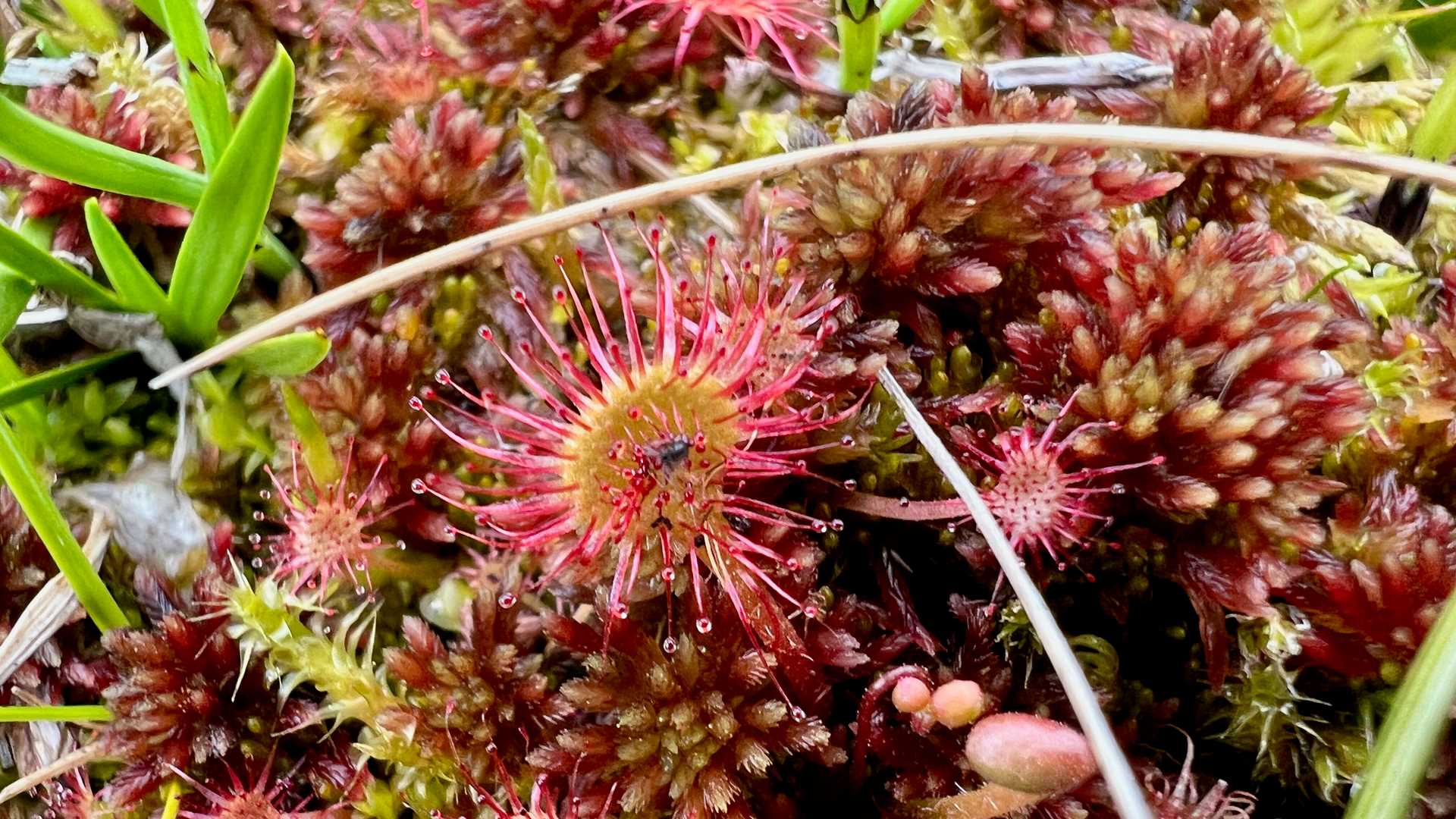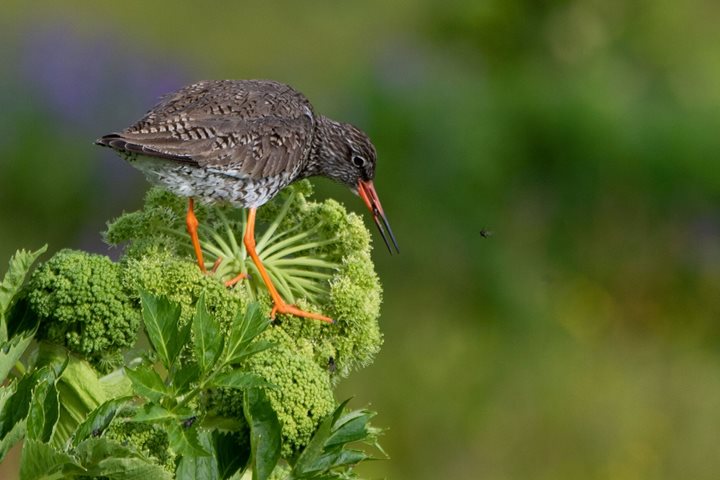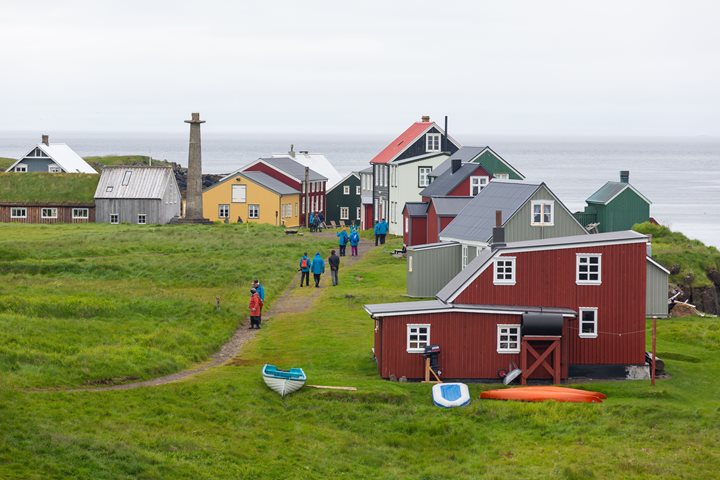National Geographic Explorer has been cruising all night, making its way westward across the top of Iceland. The sea is very nice with occasional humpback whales and plenty of seabirds. As we sail, a couple of lectures punctuate the morning.
During an early lunch, we dock at the town of Ísafjörður. There are a few options here, including just exploring the town. I opt for the Arctic Fox Center and the Valagíl hike. The arctic fox is the only indigenous land mammal in Iceland. They are not liked by the farmers because they have a taste for chickens and lambs. For many years now, arctic foxes have been trapped on the island because there is no more sea ice. We get to meet one of the very cute foxes and learn about their history and biology. There is also coffee and Icelandic ‘wedding cake,’ made from local rhubarb. It is very good!
After the Arctic Fox Center, we drive to the mouth of a wide valley. There are many waterfalls feeding the lively stream in the center of the valley. Our mission is to reach one of the waterfalls, maybe a bit over a mile away. It is hard for me because there are so many flowers to distract me. The gently sloping sides of the valley are boggy. It is easy to tell that the slow-moving water, under the bog vegetation, has become acidic and anerobic. The rocks where the water emerges from under the boggy vegetation are colored a rusty-red due to iron oxide (rust). In the anerobic environment, iron becomes soluble until it reaches the air with oxygen again. Several species of bacteria take advantage of the energy they can gain by oxidizing the iron. The bacteria cause what looks like an oil slick on the water surface. The acidic water also depletes minerals needed for plant growth, providing a habitat for plants with a different plan.
Low nutrient bogs provide a perfect environment for carnivorous plants. That is, plants that get nutrients from their insect prey. There are two species of carnivorous plants here: the butterwort and the sundew. Both plants have sticky leaves, and they attract, trap, and digest small insects.
After an early dinner, we visit Vigur Island. Here, safe shelter is provided for nesting eider ducks. In return, the eider is used as soft down for pillows and comforters. For us, there is a tour of the island facilities and hopefully more rhubarb treats!
Photo caption and photographer: A carnivorous sundew with pretty gland-tipped hairs that catch insects. Photo by Dennis Cornejo






